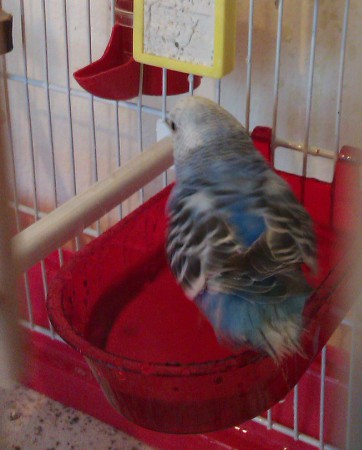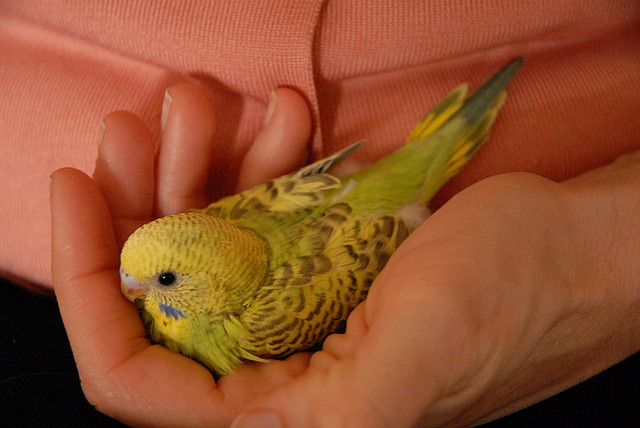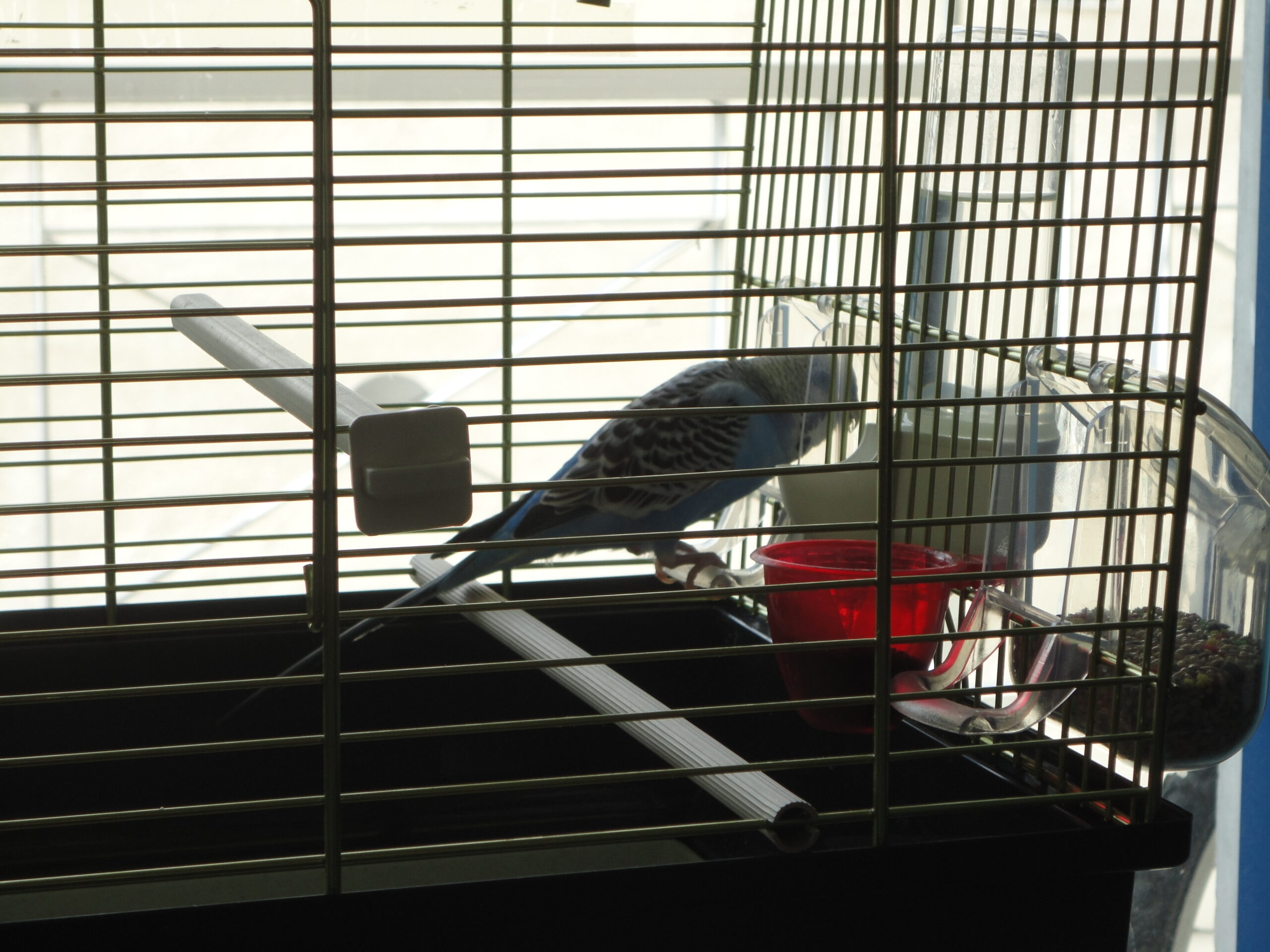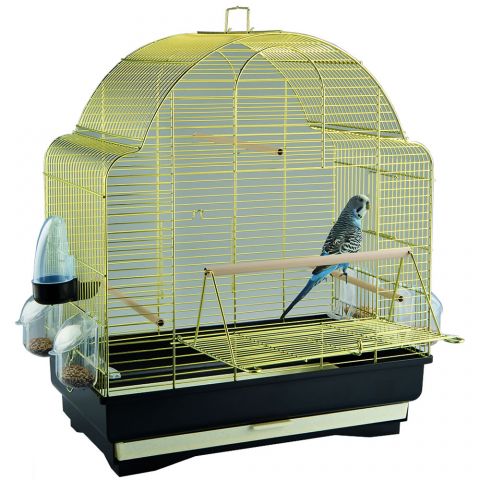Heat stroke in budgies, a real danger to our pet birds

In the summer, due to the weather warming up, the temperature increase, we should take extra care of our pet birds. The biggest danger is the heat stroke, which can be fatal for our little friends.
But what exactly the heat stroke is?
Heat stroke is a common problem for all warm-blooded creatures (humans, pets other quadrupeds and birds). This usually happens when the birds are exposed to high temperatures for a long time and many times when there is direct contact with the sun. Heatstroke is an extreme situation and a real danger for pet birds. But there are two other cases which may not have such severe symptoms but can cause harm when they occur:
- Thermal stress manifested by breathlessness and simple opening of the mouth.
- Thermal stress manifested by these symptoms and the strong anxiety of the bird. Such situations result in release of toxins in the body of the budgie, lowering their immune system and the defense of their organization. For this reason, healthy birds can be afflicted by bacterial infections and metabolic diseases.
Heat stroke can happen when the bird is kept in a cage in direct sunlight where there is no shade or protection from the sun. It can also happen when a bird is in a vehicle with the windows closed or poorly ventilated. Also, a bird can suffer from heat stroke if we offer additional heat in the form of a heat lamp or another heat source or if a bird lives very close to a heating device that operates at high temperatures.
We can easily notice the symptoms of heat stroke. A bird suffering from heat stroke has its mouth open. The temperature of the body has been increased and the bird tries to expel heat from the mouth. In addition, it keeps his wings away from the body trying to cool the area. Because birds do not have sweat glands can not easily eliminate unnecessary heat. It can also be observed ruffled feathers in his effort to help the passage of air between the wings to remove the unnecessary heat. Another symptom is the worry-stimulation. The bird tries to escape from the place, which is why he feels discomfort. It can be observed that it moves restless or hanging from the bars of the cage trying to find probably the coolest spot or where there are waves of air. You may also notice a reddened area of the nostrils and the face. Immobilization is also a symptom that a bird suffers from heat stroke. The bird shocked by the situation experienced, stays stable, has a vacant look and reduces his movements, trying to keep the temperature constant without the increase in its activity. Heat stroke can cause to a bird lack of balance. The bird loses forces and sometimes falls to the bottom of the cage. Finally, the most dangerous symptom is when a bird loses consciousness and struck the bottom of the cage, trying to stay alive. If you anticipate at the beginning of this phase you may be able to save the bird, before blood clots reach the brain, creating irreversible damage or death.
As in any difficult case, it is important to act immediately and calmly. Panic is a bad counselor and most times only adds problems and does not help. Transfer the bird in a quiet and cool place. Transfer the cage to a place in the house where breeze blows or use fan. Splash the bird with cool water, using your hands or sprayers, sp as to cool and moisturize the skin of the bird and under the wings-down, reducing its temperature. Put feet in cool water and cool his beak (they are places with more easily removed unnecessary temperature). Put in the cage a bowl of cool water in order the bird to bathe. If heat stroke is at an advanced stage, try to give water drops in the mouth with a dropper or small syringe. Wrap the bird with a wet towel and keep it quiet until overcome the shock and return to the correct temperature. Try not to cause more stress on the bird until recover completely and visit the vet as soon as possible.
We should be careful to avoid any sudden changes in temperature, such as transferring a hot cage lying into a room where the temperature is very low. Moreover, be sure that the water we use is not frozen (from the fridge) but cool tap water.
Overweight birds are in greater fear of suffering heatstroke, because the layer of fat that have functions as insulation and prevents the movement of air from the ventilatory bags. Also, mothers who brood or feed nestlings in summer. Birds exposed to a sudden increase in temperature are more likely to suffer φρομ heat stroke.
In order to prevent our pet birds to suffer from heat stroke, we should always have shade and fresh, cool water, which must be renewed frequently to any birds that spend time outdoors and avoid taking them with us when for some reason they have to stay for a while in a closed car. We can put the cage outdoors, but always be sure that there is a shady spot in their cage and enough space to renew the air well.
Heat stroke is the result of carelessness or negligence of the owner, which is why we should be very careful when we decide to pull the cage of our friend out in the sun during the summer months with high temperatures.
A few videos of our pet budgies taking a bath in their cage:







